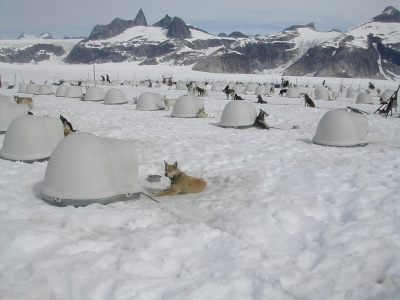

Much of being green includes recycling and reuse. I love the idea of “Free” wind and solar power, and recently learned of a power project in Scotland to take advantage of the ocean tides.
I think we should encourage the use of bioplastic harvested from the starch stored in plant sugars to create a clear plastic, called polylactic acid, or PLA. Unfortunately, the use of foods for fuel or other innovative resources increases the cost of food.
Try to list 5 (or more) things YOU do to protect the environment. Maybe the rest of us can adopt them, too. Here are mine.
- I put as little as possible down the garbage disposal. Everything that goes down the sink eventually has to be removed from our drinking water supply.
- Reusing wrapping paper for gifts is an easy and reasonable thing to do, as well as re-gifting something you can’t use. Along the same lines is saving packing peanuts, bubble wrap, and air pillows to use in the next package you mail.
- I plan the route for the errands I run so I’m driving the least amount of miles. A little off topic, I also try to shop in my own community so that my tax dollars (city and county) stay local, too.
- The load I carry in my car is kept to minimum so I’m not burning more gas than necessary. Unfortunately, I’ve been unable to reduce my personal load.
- Recycling electronics is easy, saves our landfill and keeps lead out of the ground.
- I don’t let the water run while brushing my teeth.
- I do full laundry loads whenever possible. At other times, I’m lucky to have settings on my washing machine for less water for smaller loads.
- I avoid fast food that has over packaging and creates mountains of trash.
- When I bought the house I’m in now, city ordinances required water saving commodes that use the 1.6-gallon flush rather than the normal 5-gallon flush. These are quite annoying at times, but claim to save 550 gallons per year per person. I would have much preferred the “dual flush” commode option with two buttons on top so you can be selective on water use.
- Something I’ve done since the beginning of the age of computers, with coversheets for each printout, is to put them in a pile with blank sides up, and use them as scratch paper.
- Each degree the heat is turned down saves 3 percent of heating costs, while each degree air conditioning is raised saves 3-4 percent of cooling costs. Changing the temperature by 2 degrees all year, can save about 2,000 pounds of CO2 a year.
- Cook with a slow cooker or a toaster oven (or even a solar oven!) to reduce electrical use from kitchen appliances. For a meal that requires one hour to cook in an electric oven, and which uses 2.7 pounds of CO2, a crock pot uses 0.9 pounds of CO2 for seven hours, a toaster oven takes 1.3 pounds of C02 for 50 minutes, and a microwave only 0.5 pounds of CO2 for 15 minutes of cooking. A solar cooker requires NO CO2!
- Switch to a laptop instead of using a desktop computer and cut three-quarters off your electrical use. Turn off the laptop at the end of the day.
- Switch to cold water washing and save 80 percent on energy used for laundry and save an estimated $60 a year. Hang dry your clothes instead of using the dryer and save 700 pounds of CO2 a year.
- Plug anything that can be powered by a remote control or that has a power cube transformer (little black box) into a power strip, and turn it off, and/or unplug, when not in use. (Power cubes are 60-80 percent inefficient.)
- I like the knowledge that unplugging unused chargers and appliances will save electricity. It’s something I have partially done, but need to re-survey my home for culprits. “They” say that unplugging appliances and electronics that glow could save $200 a year in electrical use.
- Turn off the lights when not in use to reduce direct lighting energy use by 45 percent. Stop using heat-producing halogen lamps (that can also be fire hazards). Install occupancy or motion sensors on outdoor lights.
- Switch to compact fluorescent from regular incandescent bulbs and use 60 percent less energy per bulb and save 300 pounds of CO2 a year.
- I do not like the little twisted CFL bulbs for two reasons. First, I cannot see in dim light, which is what most of the CFLs pretending to be regular light bulbs are. The long tube fluorescent lights seem to be “brighter” that the corkscrew shape, perhaps because they are spread out. I do like that type in the kitchen and bathroom. Second, disposal of the mercury in CFLs creates a new hazard.
- Wrap water heaters in insulation and save 1,000 pounds of CO2 a year. Insulate hot water pipes.
- Use public transportation whenever possible, carpool, shop locally, and ideally switch to a hybrid or energy-efficient car.
- Keep tires inflated to improve gas mileage by 3 percent. Every gallon saved also saves 20 pounds of CO2 emissions.











No comments:
Post a Comment